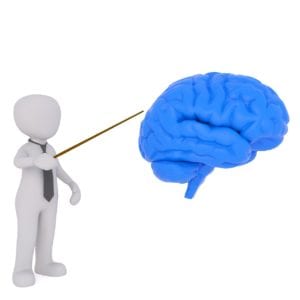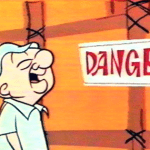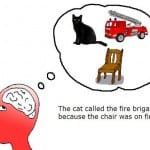
The mission of Situational Awareness Matters is to help you see the bad things coming… in time to change bad outcomes. SA is a complex neurological process and I go to painstaking efforts to ensure that what I teach here, on the podcast and in classrooms is “first responder friendly.” I don’t ever want a reader, listener or attendee to be confused by the lessons. They are way too important.
Wouldn’t it be nice to know what contributes to challenges with maintaining strong situational awareness before it is too late?
This article shares some of the more challenging situational awareness barriers.
Barriers
Here are a few of the situational awareness barriers that I have observed in my evaluation of hundreds of near-miss and casualty events:
 Pre-Arrival Lens: Determining incident conditions, prior to arrival, based on information provided by the communications center.
Pre-Arrival Lens: Determining incident conditions, prior to arrival, based on information provided by the communications center.- Confirmation Bias: Only seeing (or hearing) what you expect to see or hear based on your expectations.
- Tunneled Senses: Chemical-induced, biological narrowing of perceptual fields, leading to an inability to capture information.
- Task Fixation: A purposeful narrowing of perception to one task being performed or to one geographic area of an incident.
- Task Saturation: Loading the short-term memory buffer with too much information, leading to loss of information (forgetting)
- Multitasking: Being under the delusion that the brain can give conscious attention to two or more tasks simultaneously (which is biologically impossible).
 Mission Myopia: Being so dedicated to the mission that (1) critical clues and cues are missed, (2) critical clues and cues are captured but not understood, or (3) critical clues and cues are captured, understood, but completely ignored.
Mission Myopia: Being so dedicated to the mission that (1) critical clues and cues are missed, (2) critical clues and cues are captured but not understood, or (3) critical clues and cues are captured, understood, but completely ignored.- Urgency: Feeling so compelled to perform a task with expediency that time is not taken to capture information that forms situational awareness.
- Time Distortion: Under stress, it can be very difficult to keep track of the passage of time. This can lead to crews operating in environments longer than they should be there because the passage of time is being distorted.
- Over Confidence: The phenomenon where one’s subjective confidence in ability or judgment exceeds reality. This can cause someone to ignore clues that indicate they are heading toward trouble.
- Complacency: Letting down the guard causes a drop in vigilance and this can cause a responder to miss seeing, hearing or feeling critical clues and cues.
- Peer Pressure: Feeling a need to comply with the expectations of the group or an influential person in the group. This can lead a responder to ignore the clues and cues indicating trouble may be on the horizon. Even when they know better, a person under the influence of peer pressure may not speak up.
- Short Term Memory Overload: The average person can only perceive, comprehend and recall about seven pieces of unrelated information in the short-term memory buffer. After that, the person is subject to forgetting and, under stress, the brain isn’t very good at prioritizing what information is important and what isn’t.
 Confabulation: The brain can make up information. In the absence of a complete, coherent understanding of what is happening, the brain can “fill in” the missing information with made-up information. When this happens, you’ll have no idea your brain just lied to you.
Confabulation: The brain can make up information. In the absence of a complete, coherent understanding of what is happening, the brain can “fill in” the missing information with made-up information. When this happens, you’ll have no idea your brain just lied to you.- Distractions: Attention is easily distracted. While operating in environments where there are loud noises, bright lights, flame, smoke, radio traffic, moving people and apparatus, it provides a cornucopia of distractions. And, for so much as you’ll want to pay attention to the important things, the more dynamic the environment, the more vulnerable you are to distraction.
This is, by no means, a comprehensive list of situational awareness barriers. In fact, the research I conducted on the cognitive neuroscience of decision making uncovered 116 barriers.
I have written about many of them here on the SAMatters website and you can search many of them by typing them into the search bar on the blog page. For example, if you type the word “Confabulation” you’ll see there are four articles that discuss the barrier.
_____________________________________________________

If you are interested in taking your understanding of situational awareness and high-risk decision making to a higher level, check out the Situational Awareness Matters Online Academy.
CLICK HERE for details, enrollment options and pricing.
__________________________________
Share your comments on this article in the “Leave a Reply” box below. If you want to send me incident pictures, videos or have an idea you’d like me to research and write about, contact me. I really enjoy getting feedback and supportive messages from fellow first responders. It gives me the energy to work harder for you.
Thanks,

Email: Support@RichGasaway.com
Phone: 612-548-4424
SAMatters Online Academy
Facebook Fan Page: www.facebook.com/SAMatters
Twitter: @SAMatters
LinkedIn: Rich Gasaway
YouTube: SAMattersTV
iTunes: SAMatters Radio

Know what to do and be willing to act. This should be “JOB 1” for all Firemen and department officers. Learning what to do must be a priority and this connection to Dr. Gasaway is without question one of the best ways to learn.
Thanks Richard. That really is a great summary of the key potential barriers during incident management . I automatically thought of an example/s I had seen or experienced myself for everyone of them as I read through.
Just simply being aware that these barriers can occur can make a huge difference to how an incident controller functions. It’s like situational awareness of oneself.
Great article thanks.